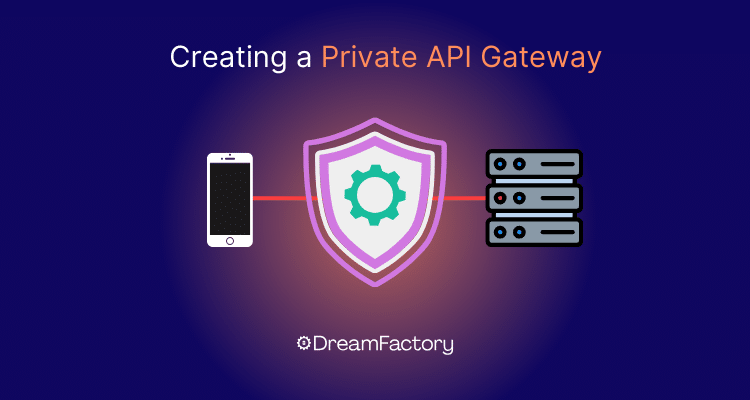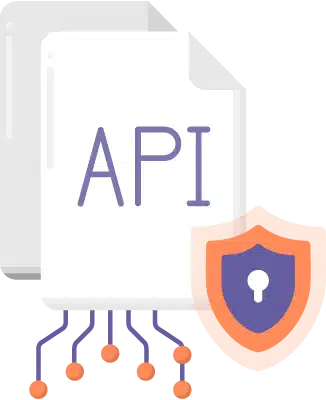Creating a Private API Gateway: Steps and Considerations
by Spencer Nguyen • February 27, 2024

In this article, we're diving deep into the nuts and bolts of creating a private API gateway. From the initial installation to securing your API with keys and roles, we'll walk you through every step of the process. Whether you're looking to connect to a Microsoft SQL Server database or any other popular database, DreamFactory makes it a breeze, automating the tedious parts and letting you focus on what matters most: your data.
Here’s the key things to know about creating a private API Gateway:
- Private API Gateways are secure, managed services acting as a single entry point for API requests within a private network, enhancing security and controlling access to backend services.
- They are vital for protecting internal APIs from unauthorized access, improving API performance through caching, and simplifying API management tasks like monitoring and authentication.
- Creating a private API gateway involves defining API requirements, choosing a suitable gateway solution, setting up the gateway infrastructure, configuring API routes and policies, and continuously monitoring and maintaining the gateway.
- DreamFactory offers a platform to streamline the creation and management of private API gateways, with features like easy-to-configure API routes, automated security policies, and integrated monitoring solutions.
- With DreamFactory, users can quickly establish a secure, efficient, and scalable API gateway, simplifying the setup and deployment process and supporting a wide range of databases, including automated generation of REST APIs and secure access control.
Table of Contents:
- What Is a Private API Gateway?
- Why Are Private API Gateways Important?
- How to Create a Private API Gateway
- 1. Define Your API Requirements
- 2. Choose a Gateway Solution
- 3. Set Up the Gateway Infrastructure
- 4. Configure API Routes and Policies
- 5. Monitor and Maintain the Gateway
- Getting Started with DreamFactory
- FAQs: Creating a Private API Gateway

Generate a full-featured, documented, and secure REST API in minutes.
Generate a full-featured, documented, and secure REST API in minutes.
What Is a Private API Gateway?
Creating a Private API Gateway involves setting up a secure, managed service that acts as a single point of entry for handling API requests within a private network. This gateway facilitates secure and controlled access to backend services, ensuring that only authorized requests are processed.
It's crucial for organizations that aim to protect their internal APIs from unauthorized external access while maintaining a streamlined process for managing API traffic. By implementing a private API gateway, companies can significantly enhance their security posture, improve API performance through caching, and simplify API management tasks such as monitoring, authentication, and rate limiting.
Why Are Private API Gateways Important?
Private API gateways serve as a cornerstone for modern organizations by offering a multifaceted platform that enhances security, streamlines operations, and ensures system scalability.
Acting as a secure entry point, they safeguard sensitive data and internal systems from unauthorized access, a necessity for industries governed by strict data protection regulations. These gateways centralize the management of internal APIs, significantly reducing complexity and boosting operational efficiency. With features like caching and load balancing, they provide stable and swift API interactions, thereby elevating the user experience for internal applications.
They support compliance with regulatory standards and internal policies through comprehensive logging and monitoring, which is vital for compliance and auditing. Importantly, as organizations grow, private API gateways adeptly scale to accommodate increased traffic and seamlessly integrate changes or new services, underpinning continuous innovation and adaptation in a rapidly evolving digital landscape.
How to Create a Private API Gateway
Here’s how to create a private API gateway:
1. Define Your API Requirements
Before setting up a private API gateway, identify the specific needs of your organization, including the types of APIs you'll manage (REST, GraphQL, etc.), authentication requirements, rate limiting, and monitoring. Understanding these requirements will help you choose the right gateway solution that fits your needs.
2. Choose a Gateway Solution
Select a gateway solution that aligns with your requirements. There are several options available, including open-source projects like Kong and Tyk, as well as cloud-based services from AWS, Google Cloud, and Azure. Consider factors like scalability, ease of deployment, and integration capabilities with your existing infrastructure.
3. Set Up the Gateway Infrastructure
Deploy your chosen API gateway solution within your private network. This may involve setting up virtual machines or containers, configuring network settings, and ensuring secure communication between the gateway and your backend services. If using a cloud provider, follow their specific guidelines for creating a private gateway instance.
4. Configure API Routes and Policies
Define the routes for your APIs through the gateway, specifying the backend services each API request should be forwarded to. Set up policies for authentication, authorization, rate limiting, and other access controls to ensure that only authorized requests can access your backend services.
5. Monitor and Maintain the Gateway
Once your private API gateway is operational, continuously monitor its performance and security. Utilize logging and monitoring tools to track API usage, response times, and potential security threats. Regularly update the gateway and backend services to address vulnerabilities and enhance functionality.
Using DreamFactory to Create a Private API Gateway
DreamFactory streamlines the creation and management of private API gateways, offering a robust platform that features easy-to-configure API routes, automated security policies, and integrated monitoring solutions. With DreamFactory, you can quickly establish a secure, efficient, and scalable API gateway. Our intuitive interface simplifies setup and deployment, mitigating the complexities typically associated with API management.
To begin, you must install DreamFactory, an API Generation platform that allows you to explore a wide range of popular databases and spin up your own hosted environment for free. Once DreamFactory is operational, navigate to the Admin panel and connect your database through the Services tab. DreamFactory supports various databases, including Microsoft SQL Server, with the connection process typically requiring only minimal configuration.
After connecting your database, DreamFactory automatically generates a fully-featured, secure REST API in minutes, complete with documentation. You can view and interact with your new API documentation directly from the API Docs tab, using the "Try it out" button for real-time testing.
Securing and interacting with your API is straightforward with DreamFactory. Create an API key by assigning a Role with specific privileges, such as limiting access to GET requests for enhanced security. Link this Role to an API key through the Apps tab, and use this key for authenticated access to your API. This setup ensures that your private API gateway is not only efficient and scalable but also secure, catering to different users with varied access needs.

Generate a full-featured, documented, and secure REST API in minutes.
Generate a full-featured, documented, and secure REST API in minutes.
Getting Started with DreamFactory
Let DreamFactory help streamline your API management process. Start a demo of our platform today to explore how we can assist you in creating a secure, efficient private API gateway. Book a consultation now to learn more about our solutions and how they can benefit your organization.
FAQs: Creating a Private API Gateway
What is a private API gateway?
A private API gateway is a managed service within a private network that acts as a centralized point for handling API requests. It ensures secure and controlled access to backend services, allowing only authorized requests through.
Why should an organization use a private API gateway?
Using a private API gateway enhances security by protecting internal APIs from unauthorized external access, improves API performance through caching, and simplifies management tasks like monitoring, authentication, and rate limiting.
How do I start creating a private API gateway?
Begin by defining your API requirements, such as the types of APIs (REST, GraphQL, etc.), authentication needs, rate limiting, and monitoring. This helps in selecting a gateway solution that fits your needs.
What are some options for gateway solutions?
There are multiple gateway solutions available, including open-source projects like Kong and Tyk, and cloud-based services from AWS, Google Cloud, and Azure. Choose one based on scalability, deployment ease, and integration with your infrastructure.
How do I set up the gateway infrastructure?
Deploy your chosen API gateway solution within your private network, configuring network settings and securing communication between the gateway and backend services. Cloud users should follow their provider's guidelines for private gateway instances.
How does DreamFactory simplify creating a private API gateway?
DreamFactory offers an intuitive platform with easy-to-configure API routes, automated security policies, and integrated monitoring solutions. It supports a wide range of databases and automates the generation of secure, documented REST APIs.
As a seasoned content moderator with a keen eye for detail and a passion for upholding the highest standards of quality and integrity in all of their work, Spencer Nguyen brings a professional yet empathetic approach to every task.